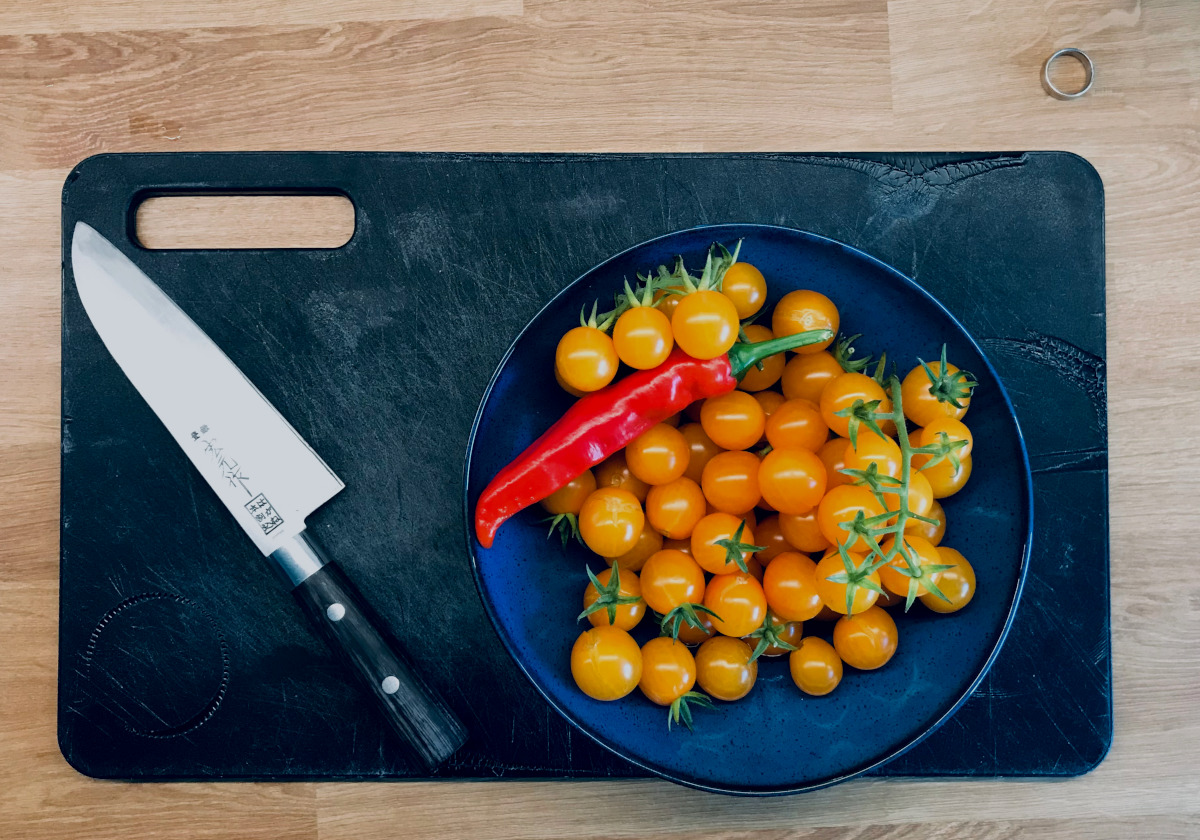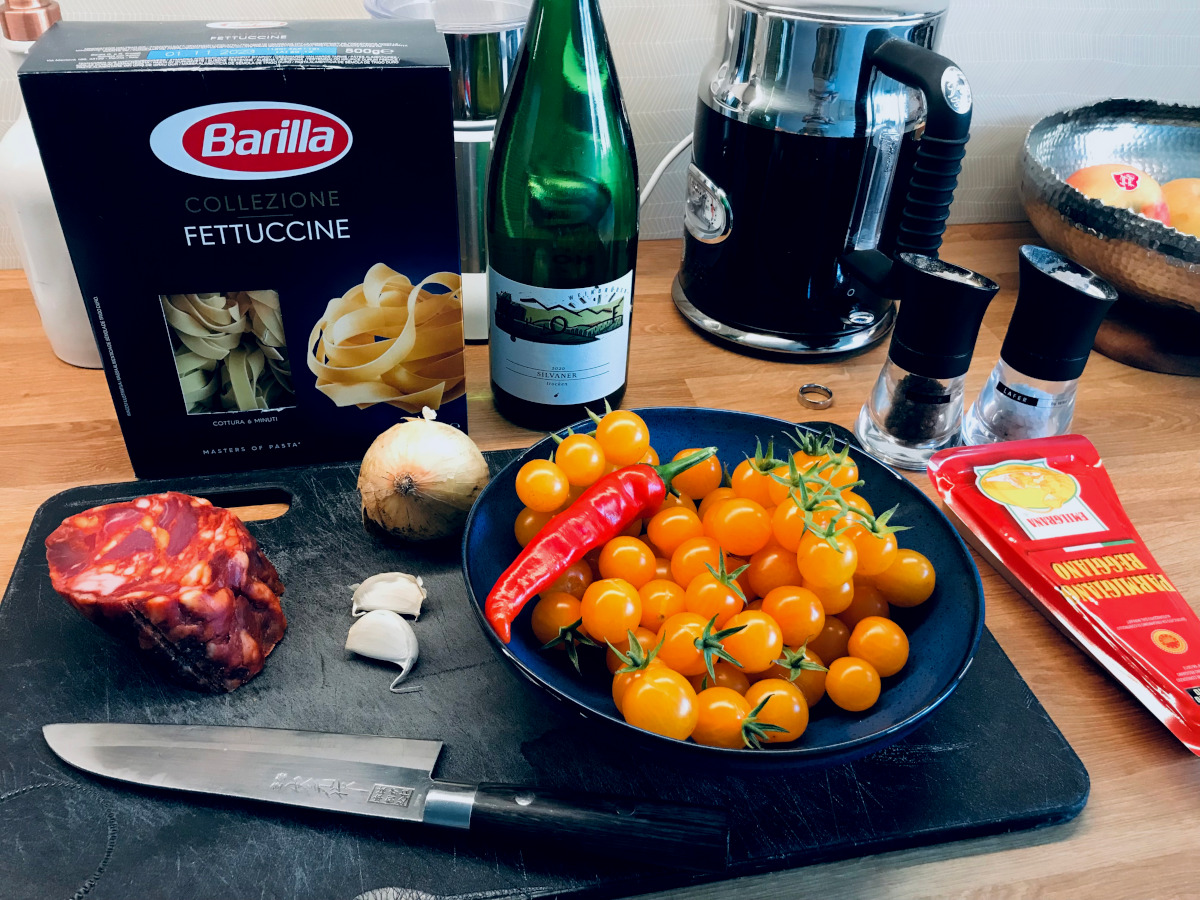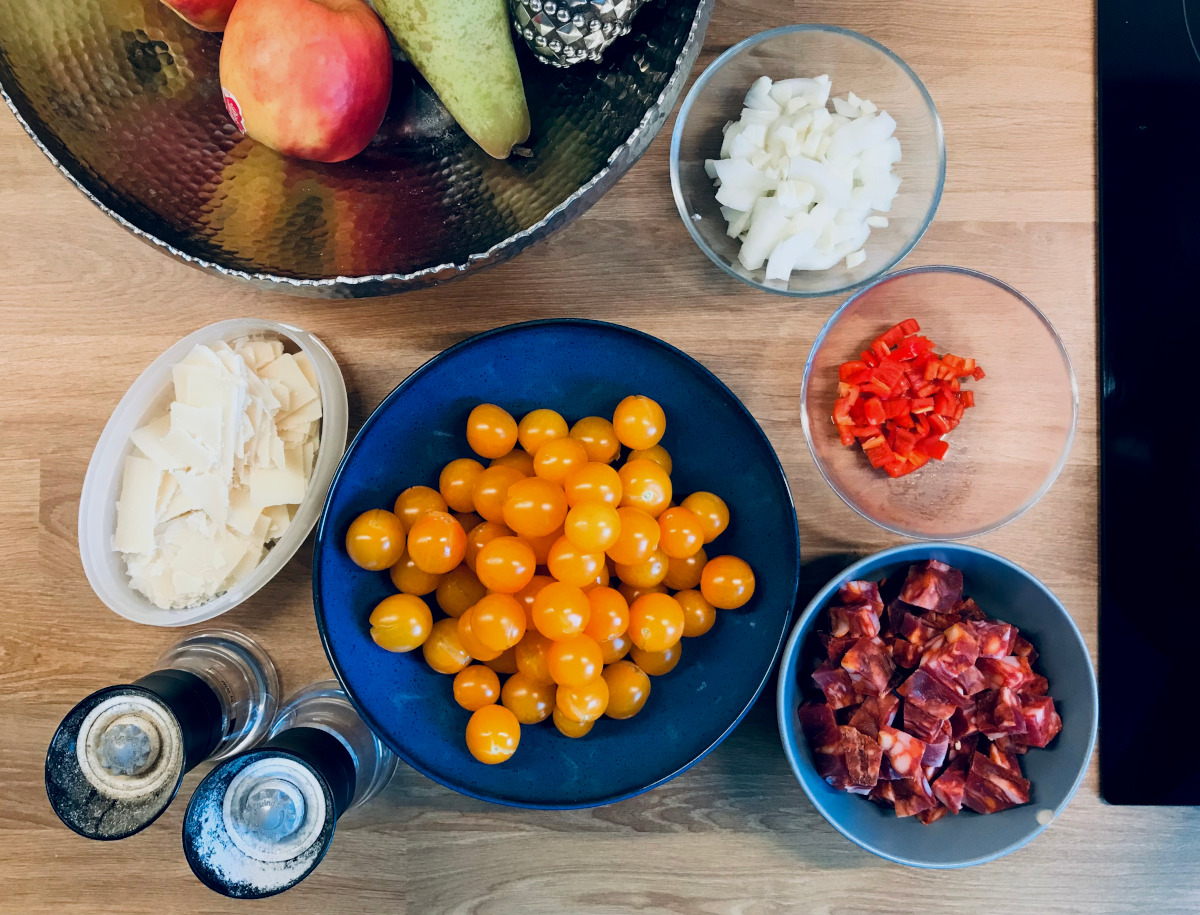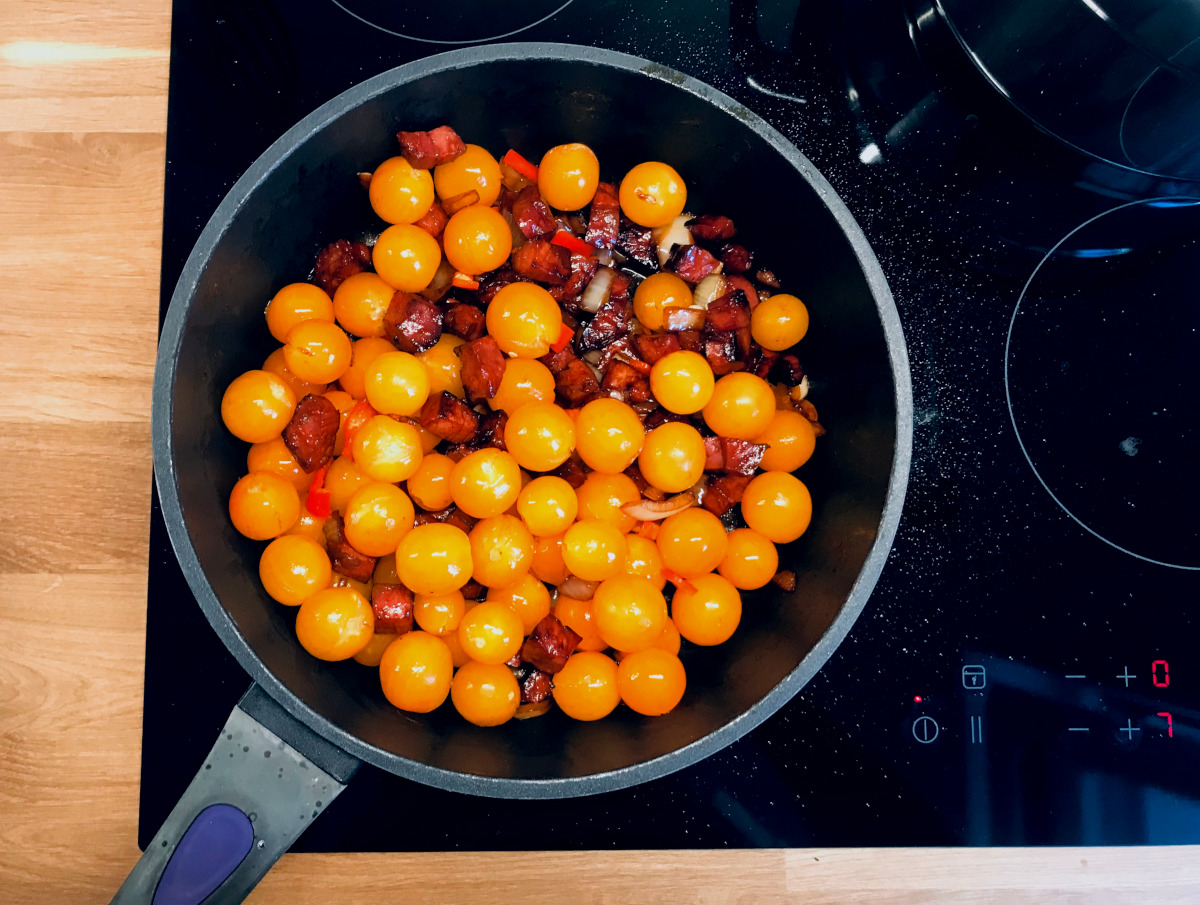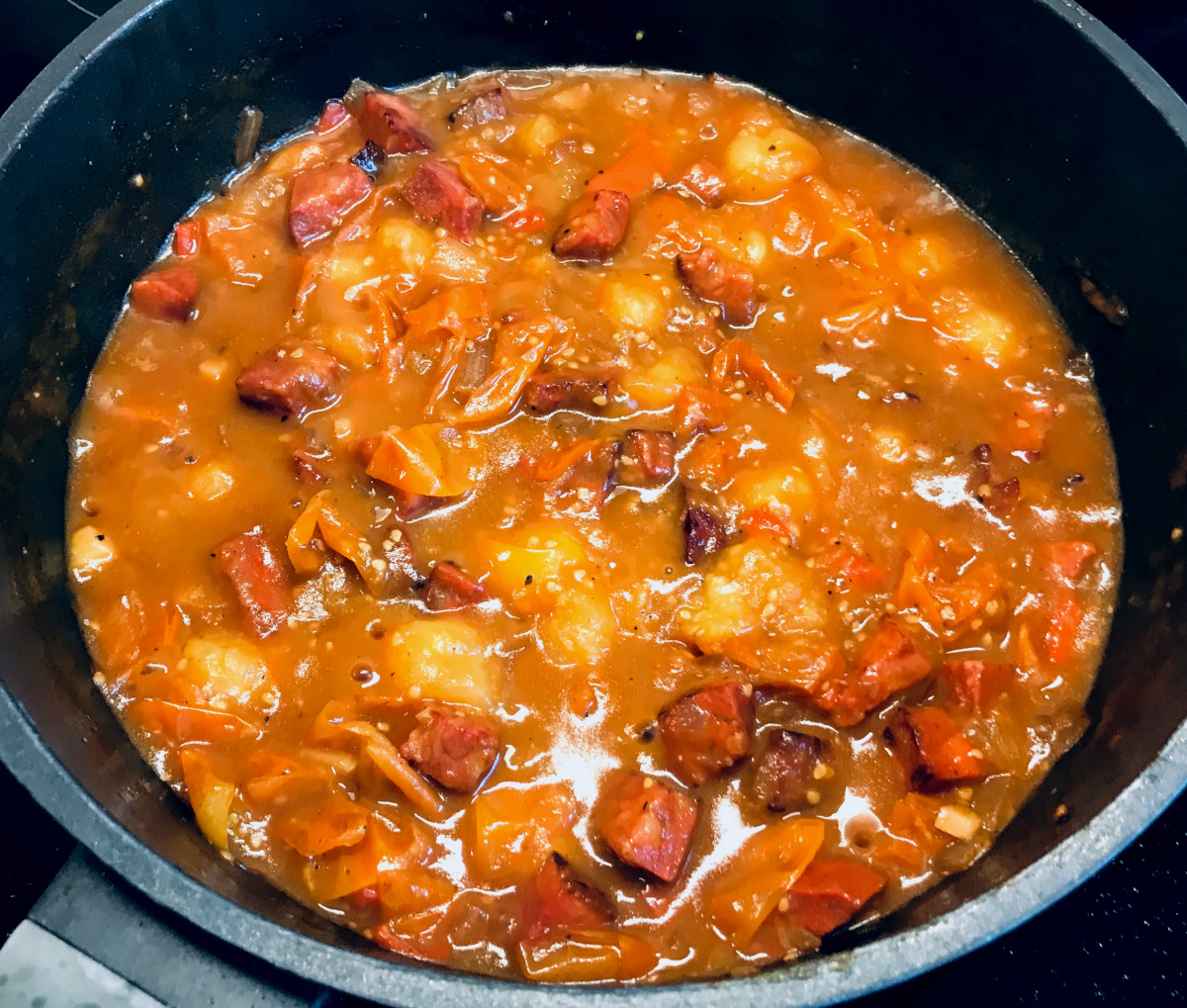Hot Yellow Tomato Sugo with White Wine and Chorizo
A deliciously spicy summer dish, cooked with home-grown tomatoes and peppers.
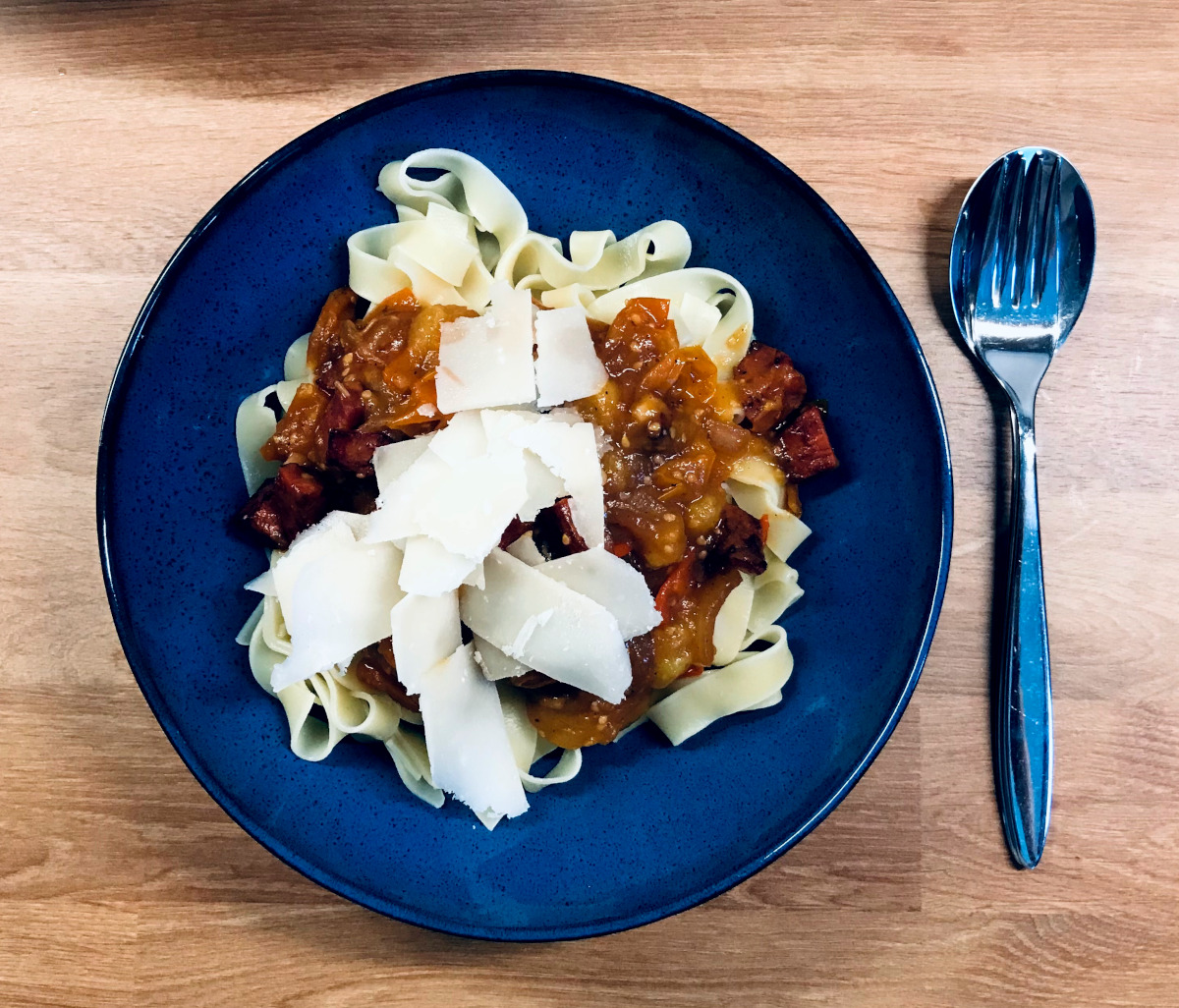
When we moved to Düsseldorf, Katy planted a small inner city garden in our backyard. We’ve already had a few (tiny) apples and strawberries of our own harvest this year and this morning, Katy harvested yellow tomatoes and a red pepper. I decided to take some leftover chorizo from another dish and create an improvised Mediterranean meal for dinner for us tonight. Here’s the recipe, in case you want to duplicate it. I can recommend doing so, it was delicious!
Ingredients
- Fettucine, spaghetti or linguine
- Yellow tomatoes
- Red peperoncino-type pepper
- Chorizo
- Onion
- Garlic
- Parmesan
- White wine
- Salt and pepper
Due to the improvised nature of this dish, relying mostly on our own harvest, I don’t really have quantities for these ingredients. I cooked this dish for two people. For starters, use plenty of tomatoes (its the main ingredient), as much chorizo as you’d like to spice it up (buy it as a large chunk of sausage, if you can), an onion and two cloves of garlic and then modify the next time based on what you’ve learned is needed. You should already have a feeling for how much pasta you usually need. Never skimp on the parmesan and test the peperoncino pepper – if it’s too hot for you, make sure to remove the seeds and the core housing them.
Directions
- Start creating a mise en place of all the ingredients. Prepare the tomatoes (leave whole if they are small like ours), chop the pepper, onion and garlic, dice the chorizo and grate some parmesan into crude slices.
- Put a large pot with water on high heat.
- Put the chorizo in a pan and turn up the heat to full. Render it until it starts getting black and there’s a lot of oil collecting in the pan.
- Turn down the heat under the pan to about half. Throw in the onion and garlic and stir it often, soaking it in the chorizo oil. Simmer until the onion starts becoming translucent.
- Throw in the tomatoes and the pepper. Turn up the heat a bit. The goal here is to turn the tomatoes and onion into almost a paste. There should be plenty of oil in the pan, so nothing should stick to the bottom. Keep moving it around in the pan often.
- The whole mixture should start to bubble. Keep it plenty hot, but not too hot. We don’t want to burn it. When it’s bubbling well and the tomatoes start falling apart, deglaze with plenty of white wine (flood the cowling). Turn down the heat to keep it at a good simmer. The goal is to evaporate much of the wine and make a sticky sauce where all ingredients blend together well.
- By now, your water should be boiling and you can throw the pasta into the pot. When exactly you do this, depends on the pasta you’re using. If in doubt, consult the packaging. The goal here is to use the time it takes the pasta to cook to get the sauce to the perfect consistency. This might take some practice. Don’t worry if you don’t get it right on the first try. If the pasta finishes early, you can drain the hot water through a colander into a pot, put the colander on top of it and keep it warm that way. If the sauce is finished first, turn the stove off and keep it warm on the hot plate. Don’t forget to stir it from time to time.
- Season the sauce with a bit of salt and plenty of black pepper. If your tomatoes aren’t sweet enough (often the case with store-bought ones), add some sugar until you taste some sweetness complimenting the hotness of the pepper and chorizo.
- Put the pasta on the plates and top it with the sauce. Garnish with plenty of parmesan.
If you did it right, your sauce should look like this at the end of the process:
Create the Right Atmosphere
While I was cooking this dish, I was listening to Thelonious Monk Quartet with John Coltrane at Carnegie Hall. I can only recommend it. It’s a wonderful album and it took me exactly to the end of the second recording of Epistrophy (the last track) to finish cooking. I also recommend having some of the leftover white wine while you cook. All of this makes for a better end result, I feel.

